12 simple sofa buying mistakes you should avoid if you can
How many of these sofa buying mistakes have you made?

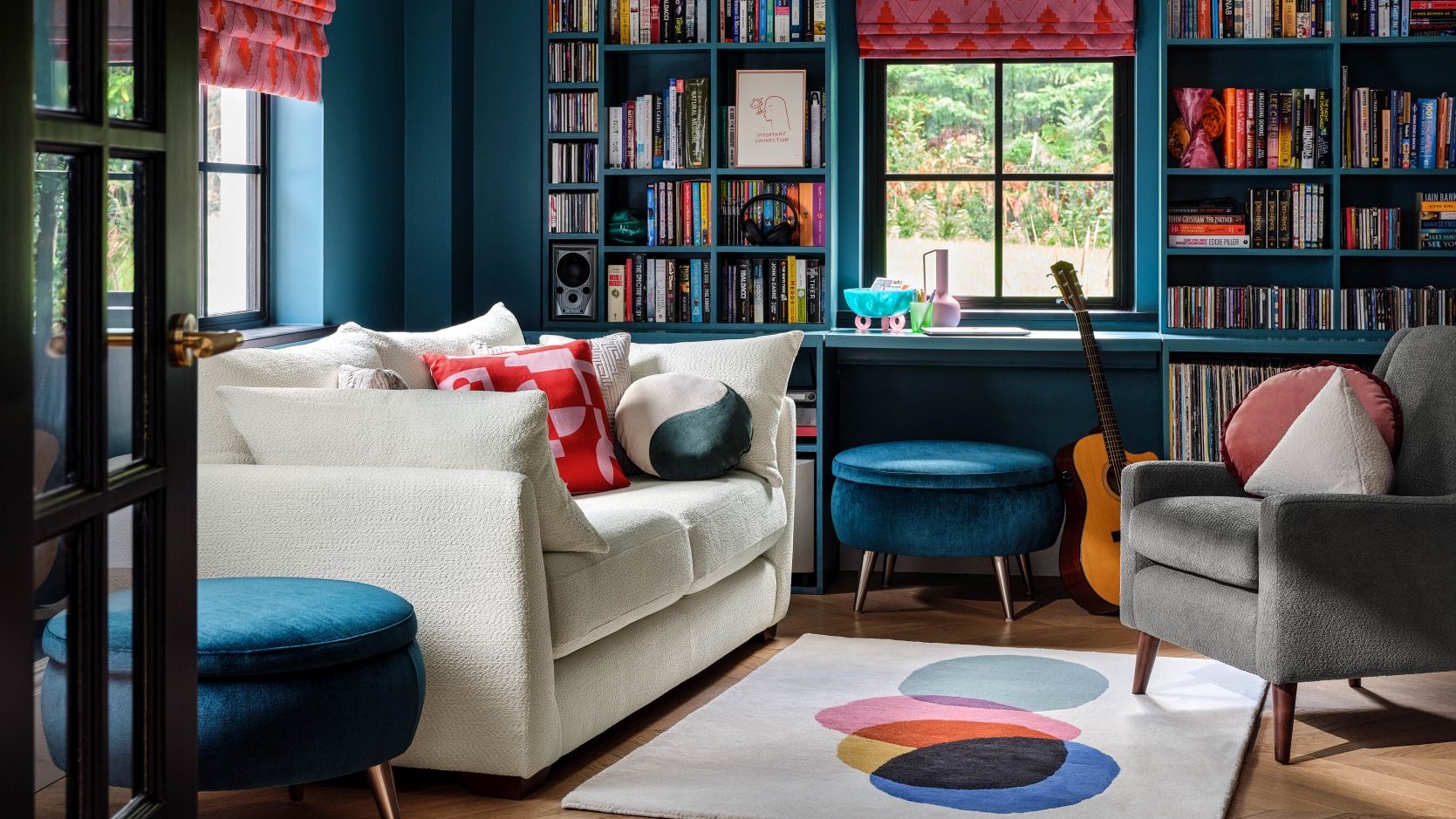
Choosing new seating for our living rooms should be a joyful affair, shouldn't it? Because sofas are fun, aren't they? They're colourful and squishy and where we enjoy cuddles and cups of tea, family movie nights and sneaky snoozes. Yet it can be a deceptively hard task – namely because there are so many sofa buying mistakes to fall foul of.
That showroom excitement can quickly dissipate when your new sofa arrives and you find that it swamps the room, or isn't the colour you expected, or immediately becomes one giant cat-scratching post. Or worst of all, it doesn't even fit it through the door.
'Changing a sofa after you’ve bought it and it’s been delivered is a hassle, so it’s best to give some serious thought to the style, feel and size that you need before purchasing,' advises Patricia Gibbons, head of buying at Sofa.com. So Patricia, along with several more sofa experts, have shared their advice on how to buy the best sofa for you, first time.
Sofa buying mistakes that too many of us make
'When it comes to choosing a new sofa, the initial things to consider are the space you have in your room; how many people you would like to seat and the level of support you prefer,' says Gisela Lancaster, head of buying at Sofology, who also has warnings for would-be buyers.
Here's what not to do...
1. Getting access wrong

Your first sofa faux pas? Buying something you can't get into the house. This shouldn't be taken for granted. Even bi-fold doors across the back of your house won't help you if the only access to them is via a narrow path between two walls.
'When buying a new sofa, scale is an important factor to consider, not only in terms of the final look of the room but also to allow access in the first place,' says Patricia Gibbons. 'If your sofa, for example, needs to make it up some stairs, measure the width of the staircase at its narrowest point, including any handrails or light fittings. And make sure you also measure your front door (or the door being used for access) accurately, including its height.'
Sign up to our newsletter for style inspiration, real homes, project and garden advice and shopping know-how
Speaking from personal experience, doors can cause all sorts of issues. This writer made the error of choosing a replacement sofa that had the same measurements of her previous one, not taking into account that she'd switched her front door from wood to uPVC since moving in. Not only could she not get her new sofa in, but she couldn't get the old one out through the smaller aperture.
'Some sofas come in breakdown-able versions, so it's always worth asking about these if you think access might be tight,' suggests Patricia. This is particularly true of sofa-in-a-box solutions from the likes of Swyft and Snug, where the base, back and arms of the sofa are bolted together after delivery. Because there's no bulk, this makes the pieces far easier to manoeuvre around corners and through doorways and stairwells.
2. Choosing the wrong material for your lifestyle
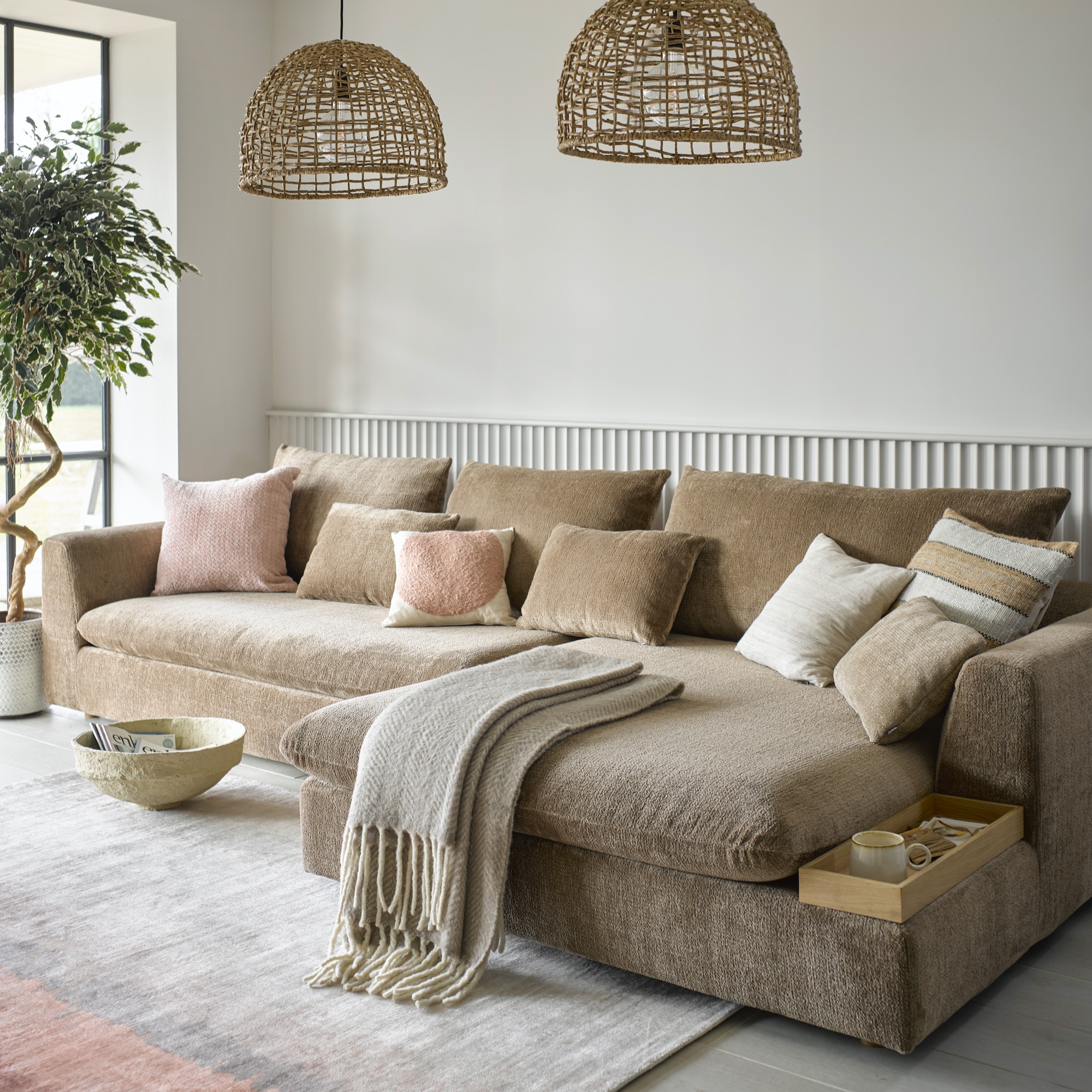
As anyone who has seen their pristine sofa go from white to splodgy beige in a matter of weeks will know, choosing the right material for your sofa isn't only about picking the colour or pattern that catches your eye in the showroom.
Start by asking yourself a few questions, for example: 'Is it a high-traffic or low-traffic home?' 'Is it a high-use sofa or an occasional chair?' 'How much of a statement do you want?' You'll then be in a better position to make fabric decisions.
'The level of wear and tear your sofa will have to endure will affect your choice of upholstery material and colour,' says Sofa.com's Patricia Gibbons. 'If you’re prone to spilling drinks, maybe because of having children in the home, it might be best to opt for a washable fabric choice. Other fabrics, such as cotton matt velvets, really don’t like getting wet at all so are better suited to more tranquil environments.'
Poor material choices are a bugbear of Vintique Upholstery's Sharon O'Connor. 'People often go for faux leather because they think it's a more sensible choice if they have a cat or dog or kids, but it's a terrible option for sofas,' Sharon explains. 'It hates moisture, so you can't clean it easily, it doesn't like the changes in temperature that come with body heat – for example, if you're sitting on the sofa in shorts on a hot day – and it will peel very quickly.'
'Also, a lot of people will think they've bought 100% real leather in store,' she continues. 'But what they've actually bought is a hybrid of real and bonded or faux leather, which again, will peel,' she adds. 'When I'm choosing sofa upholstery, I will only pick fabrics that have a very high rub count, to make sure they last.'
'A lot of our fabric swatches have information on the back detailing their "Martindale rub count",' explains Caron Grant, Brand Manager at Bridgman. 'This is incredibly important as it indicates the durability of a fabric according to the amount of time the material will take to show distress.
'Anything with a count of over 20,000 is a solid choice for general everyday use, but for a truly premium piece, you'll want to find something of 25,000 or even upwards of 30,000. These fabrics will last the longest, and are truly worth the investment.'
3. Not properly considering the colour
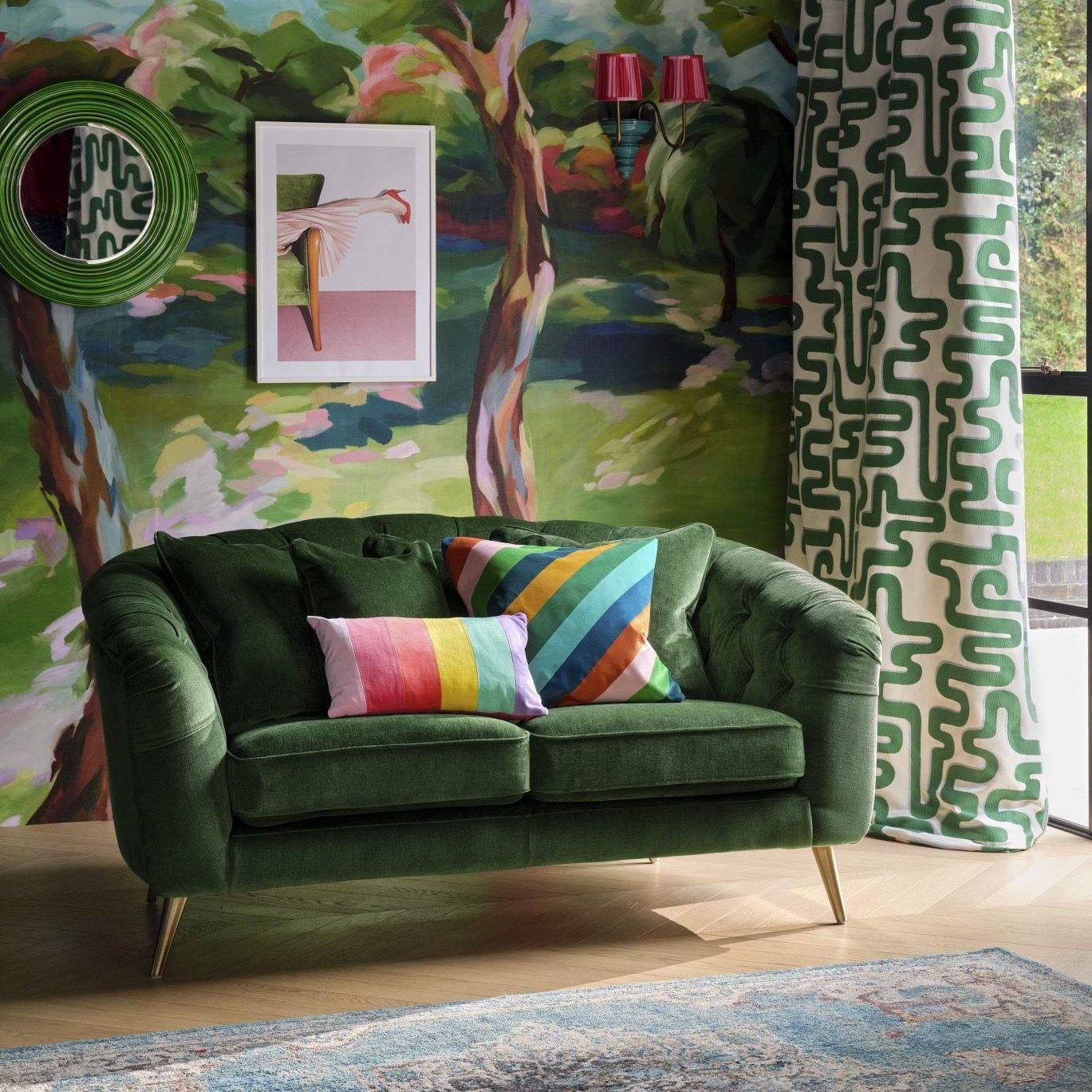
'When it comes to colour, it’s important to consider how your sofa will look in different lighting,' says Gisela Lancaster. 'A certain shade or material may look different under natural sunny conditions versus when in artificial light. You can order swatches of your shades before making your final decision to ensure you aren’t surprised by any changes in colour throughout the day.'
Sharon O'Connor knows the importance of using samples from personal experience. 'I live in a cottage and was desperate for a forest green sofa, but every sample of forest green fabric that I tried looked too dark,' she says. 'So I now have an emerald green sofa, and it works brilliantly because it lights up the room through the year. And because the room looks out onto my garden, the sofa connects with the greenery beyond – it just works so well.'
4. Settling for the wrong stuffing
Once you've picked the right material for the exterior of your sofa, your next consideration is what's inside it. 'Comfort is king,' says Dani Burroughs, head of product for Snug. Whether you want deep hugging seats or a squishy pillowy feel, it’s all about personal preference.'
'For plush and pump opt for foam filling, it’s great at keeping its shape and ensuring years of blissful ‘ahhh’ moments,' adds Dani. 'If you’re on the hunt for something with a little bounce, try pocket sprung. The individual pockets spring back into place after every use, meaning your sofa will look as good as new every time.'
'I think foam core with hollow fibre wrap or pure hollow fibre is a really good sofa seat cushion filling,' says Sharon O'Connor. 'It lasts for years and you get that really bouncy, luxurious look without constantly having to plump.'
'Personally, I'm not a huge fan of feather cushions – the longevity and durability is not great,' adds Sharon. 'The feathers are forever poking out and that's because the spines break, they all fall to the bottom of the cushion, then as you plump they work themselves out of their lining and then the upholstery.'
Interior Designer Sophie Clemson of The Living House agrees. 'If you’re not about plumping up your sofa every time it's sat on, then avoid feather filling, which needs to be maintained regularly, or you’ll end up with a tired-looking sofa very quickly,' she says. 'Go for a filling that, of course, you’re going to find comfortable, but that's easy to maintain. Marks & Spencer do a relaxed fibre filling that you will sink to but has longevity.'
5. Letting colour win out over shape

When shopping for a sofa that you intend to live with for a long time, it's a sensible idea to start with its shape. If you're drawn to a particular style – such as Sofa.com's iconic Bluebell, a Chesterfield or a Togo (as seen at Ligne Roset) – your attachment will last longer than your love for its colour or fabric.
'It sounds counterintuitive for an upholsterer, but I really want people to buy well,' says Sharon O'Connor. 'Then eight years later, when you're tired of it, or it's worn out a little bit and the cushion fillings need refreshing, you can get it refurbished. If you've bought well in the first instance, you're unlikely to go off the style of sofa – you're more likely to go off the colour or the fabric and need the padding to be updated.'
'Avoid chunky and bulky legs on sofas, and go for tapered legs so that you can see underneath the sofa,' adds Sophie Clemson. 'Any furniture you can see underneath will give the illusion of more space – and is much easier to vacuum under too!'
6. Failing to measure up
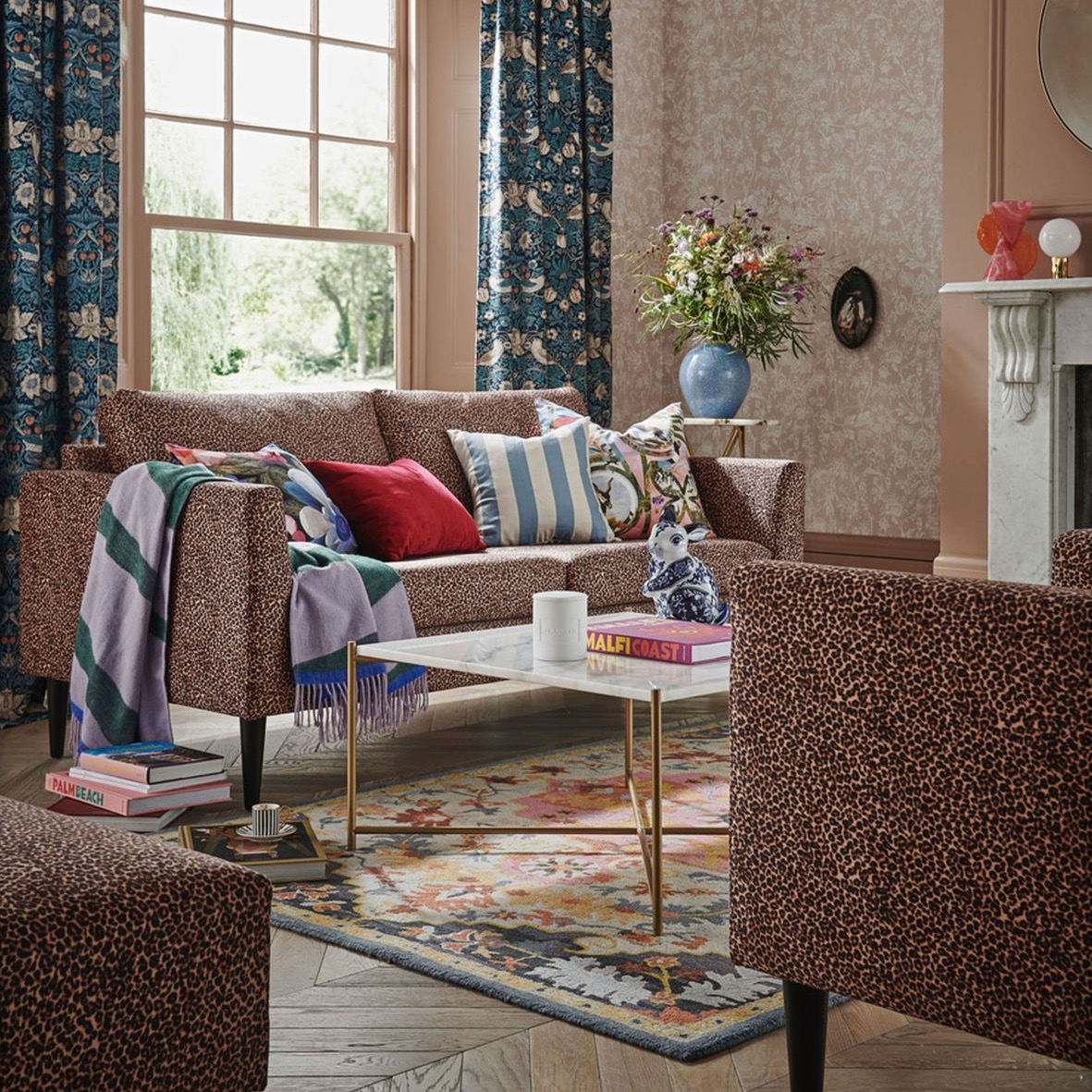
This sofa-buying mistake goes hand in hand with our first rule about access.
'Make sure you measure your room accurately and, if you have an existing sofa, use that as a benchmark to understand the dimensions of your new model,' says Gisela Lancaster. 'If you’re working with an empty room, lay down newspapers to help you visualise the footprint the sofa will use. Don’t forget to factor in leg room and space to move around the sofa!'
7. Getting the scale wrong
'Choosing the right size sofa is key,' advises Patricia Gibbons. 'Too big and the sofa could feel like it engulfs the entire room. Too small and you could end up regretting that you don’t have more room to lounge. In general, smaller rooms benefit from sofas and armchairs with slimmer proportions and sleeker, clean silhouettes that can be more easily moved around and curated. Larger rooms, with lots of light, can more easily pull off corner designs or three and four-seaters.'
“Investing in a sofa that doesn’t fit with the proportions of your living space is a common mistake. Consider how you want your sofa to sit in your room,' says Gisela Lancaster. 'Opting for a petite model with a tall back and narrow arms will make the piece appear larger than it is and create a focal point for your room, whereas choosing a corner sofa with a low back can help make a room feel bigger and the sofa less imposing – ideal for anyone with a smaller living area.
'If you’re worried about space, look to add a loveseat as this will take up less space, or for larger spaces, can be used to complement an existing sofa set up,' adds Stephany Aubrey, brand expert at Zinus.
'Consider everything else that you would like to fit in the room when choosing your sofa, such as side tables,' adds Sophie Clemson. 'Will there be enough space to have a side table on either side of the sofa? Is there room for an accent armchair?
'A mistake to avoid is lining your sofa up against the wall, as this, believe it or not, can actually make your room feel smaller and give the look of a waiting room. Pull the sofa out and leave space behind it. Bringing your sofa and armchairs closer to the centre of the room can create a cosier seating arrangement.'
8. Not trying before you buy
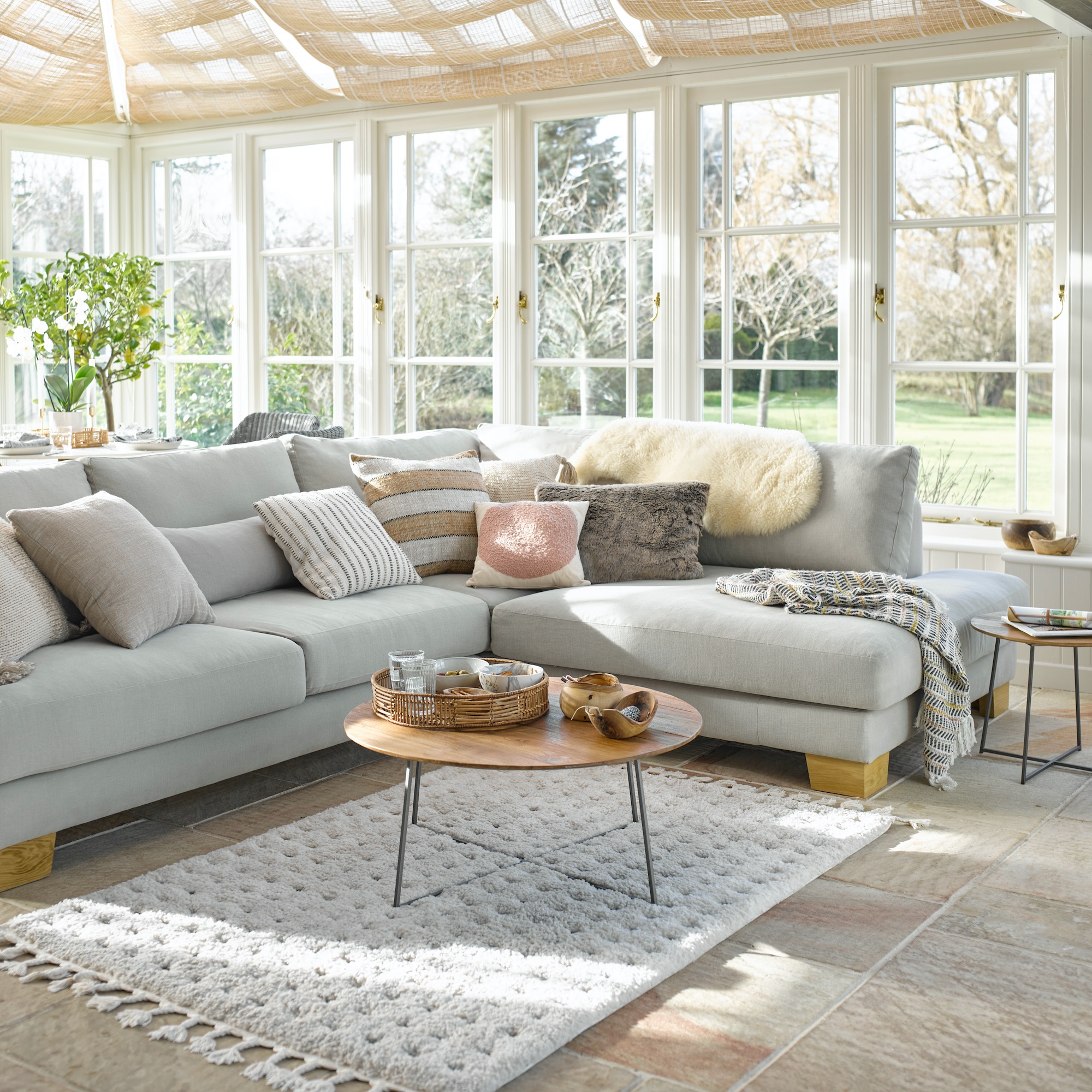
With internet ordering easier than ever, more of us are willing to buy online without ever visiting our prospective sofa in the flesh. but that could be a mistake on such a high-ticket item. 'We always recommend seeing your sofa in person before ordering if you can,' says Caron Grant, 'and assessing its looks, touch and feel.'
'Start by looking at the sofa, and asking yourself whether you can notice any loose threads, any bowing of the frame or any other things that seem out of place,' Caron advises. 'In a showroom with a lot of foot traffic, the sofas are going to show how yours could look in a few years, so it's important to take in how much wear and tear the piece you're interested in can withstand.
'Next is feel. Sit on the sofa, put your feet up, and even lay back. You'll probably be using it every day, so finding something comfortable and supportive is crucial. This is how you'll figure out the quality of the cushions – if they're lumpy or uneven, it's not a quality piece.
'And finally, touch. Touch is arguably the easiest way to determine the quality of a sofa because you don't necessarily have to go into a showroom. Sample boxes will reveal whether your desired upholstery is soft, velvety or a beautiful natural texture, or something with a really cheap finish that won't last a year!'
9. Ignoring the construction
The construction of your sofa won't necessarily be obvious under all that upholstery. But it's worth asking questions before you invest.
'When you pay £2,500 to £3,000 for a sofa, you'll assume the frame is held together with tenon joints, but it's not always the case. It makes me really sad when I see sofas made with chipboard and cardboard and held together with fence staples and lots of glue,' says upholsterer Sharon O'Connor. 'Especially when you look at antique pieces and see how much care was taken. Antique pieces will often have the maker and the upholsterers' names written on them in pencil because they took such pride in their work.'
Inevitably, ever-increasing costs mean that it's harder to find sofas with the same build quality of antiques, but it's not impossible. And you can enquire when shopping to see what materials are used in construction, and whether the sofa is built to accommodate reupholstery down the line.
Signs of quality include hardwood frames that have been screwed or put together with proper joints, rather than stapled. Springs, webbing, and long guarantees are other tell-tale signs. A good guarantee will run for at least 15 years, and lifetime frame guarantees are not unheard of. ScS is one brand that offers this.
10. Failing to consider a modular sofa
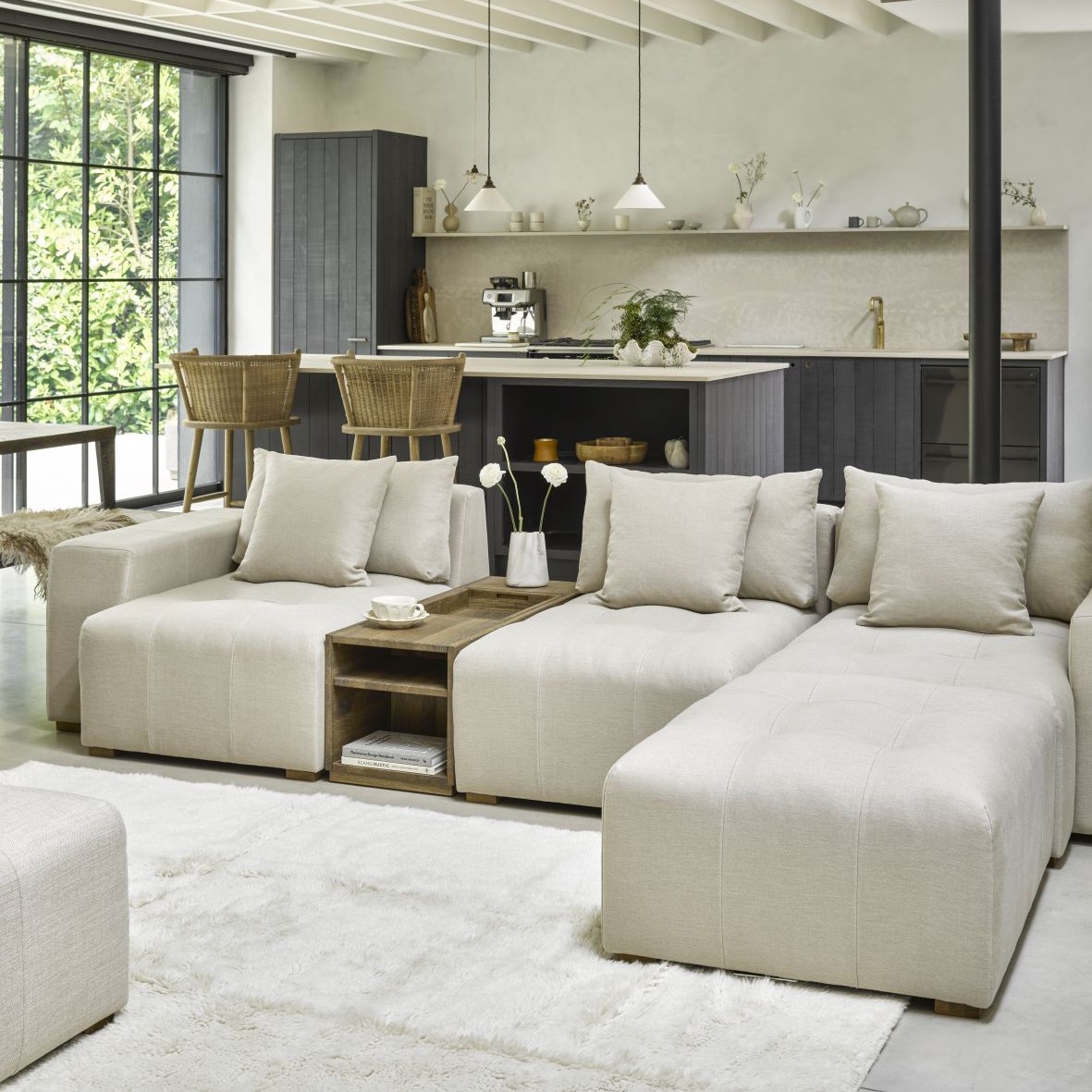
If you're investing in your first sofa, one way to ensure its longevity as your circumstances change is to pick a modular design. 'Look for a sofa that grows with you and your lifestyle as your needs change,' says Snug's Dani Burroughs. 'This will mean you never have to worry about your sofa being left or right aligned.'
'Want to give your sofa a makeover? Try swapping out the arms and feet for other options to give your sofa a completely new look for that new home you just moved into. Young family that's growing? Turn your three-seater sofa into a corner sofa by simply adding new pieces.'
11. Taking a risk on pattern
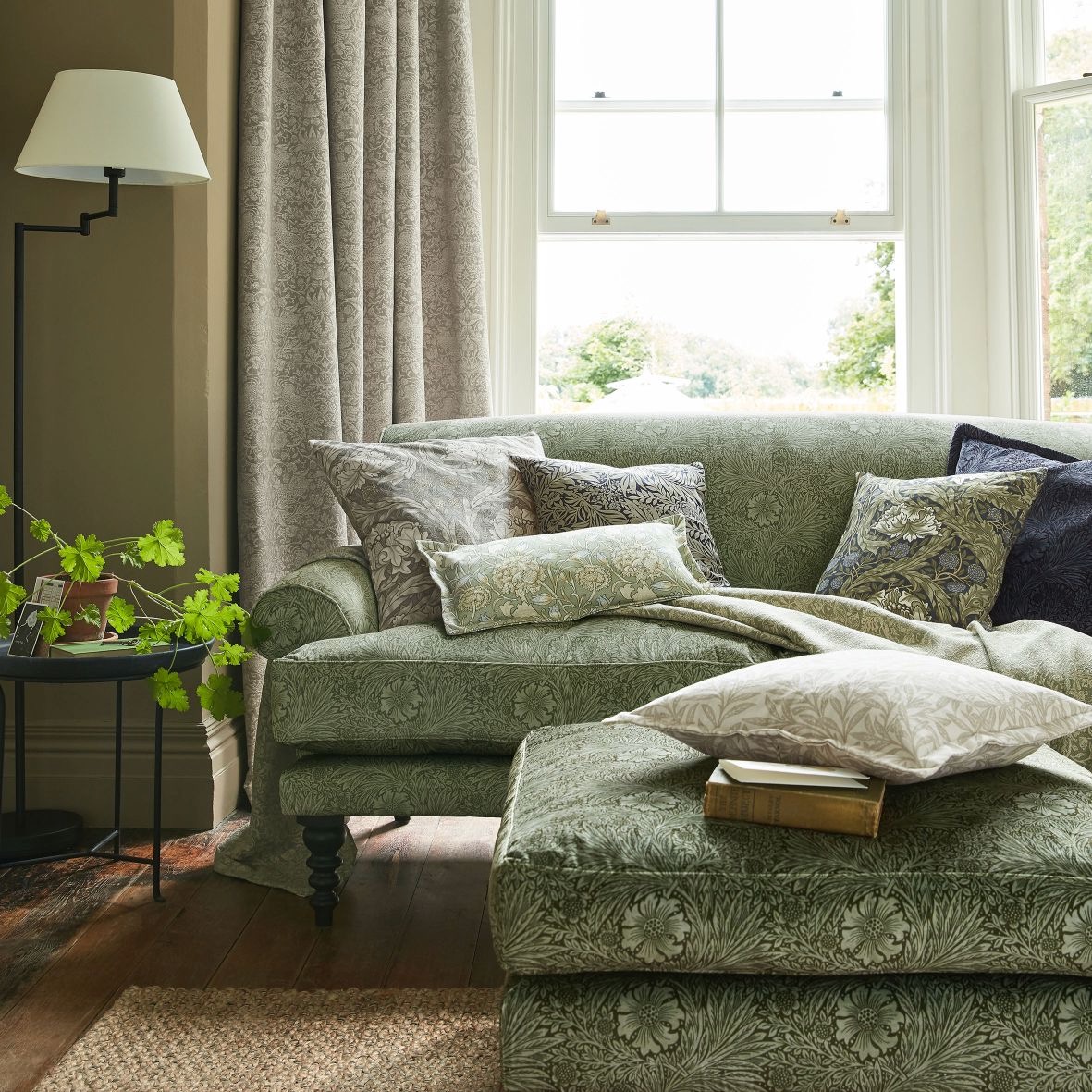
Sofa disappointment can also come if you choose a patterned design.
'A standard three-seater sofa probably needs around 15 metres of fabric for a plain, and then, depending on how big the pattern is, around 17 or 18 metres of patterned fabric,' says upholsterer Sharon O'Connor, who goes on to explain why this is significant.
'When it comes to pattern-matching prints, I see some horrors online and in-store, where whoever has made the sofa has not considered matching that pattern. It's a common fault of modern furniture, where – possibly in a quest to save fabric and therefore money – patterns don't match. If you're buying something new, and paying more for a pattern, make sure it lines up before you accept the piece.'
12. Not protecting your sofa
Our last sofa-buying mistake is particularly pertinent if you have pets or young children – and that's protecting your new purchase. Insuring against stains won't be for everyone, but if you've invested heavily and live in a high-traffic household, it could be worth it.
'We offer the Guardsman fabric protection plan on all our fabrics which should give you peace of mind if you have a spill,' advises Patricia Gibbons. 'If the stain still shows after following the Guardsman directions, they’ll send out one of their team, free of charge, to tackle the stain themselves.'
Most sofa suppliers will offer some sort of fabric protection insurance. For example, The Lounge Co offers insurance against stains and accidental damage from £34.69. Alternatively, you can order the Guardsman protection yourself at Safeclean.
FAQs
How do I measure my room for a new sofa?
'Clear the room where your new sofa, armchair or footstool will go and measure the width and length of this space to figure out the maximum dimensions for your new living room suite,' says Caron Grant, brand manager at Bridgman. 'To help you to visualise how the sofa will sit, lay out paper templates in the shape of each piece of furniture to establish whether you can still comfortably move around the room.'
'Sofa measurements usually include the legs, meaning if you're looking for seat height – the measurement from the floor to the top of the seat cushion where you'll be sitting – the dimension is taken with the legs of the sofa included.'

Amy Cutmore is an experienced interiors editor and writer, who has worked on titles including Ideal Home, Homes & Gardens, LivingEtc, Real Homes, GardeningEtc, Top Ten Reviews and Country Life. And she's a winner of the PPA's Digital Content Leader of the Year. A homes journalist for two decades, she has a strong background in technology and appliances, and has a small portfolio of rental properties, so can offer advice to renters and rentees, alike.